Massive Amounts of Illegal Ivory Seized in Asia and Africa

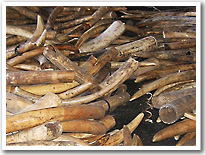
Authorities in Zanzibar reported the seizure of 1,041 ivory tusks in August 2011.
© TRAFFIC | Illicit trade in ivory has been escalating worldwide since 2004. In the past month, law enforcement officials have made massive seizures of illegal ivory in Asia and Africa. Experts believe that easily accessible markets selling illegal ivory and Chinese buying power are the leading drivers behind Africa's elephant poaching crisis. And now Malaysia has emerged as a new smuggling transit point for shipments. Read about the seizures and what WWF is doing to stop the illegal ivory trade.

Share this story:   | In Depth: Elephants and Illegal Wildlife Trade
All about African and Asian elephants
FAQs about illegal ivory trade
WWF's role in fighting illegal wildlife trade
|
Arctic Sea Ice Levels Plummet to Record Lows

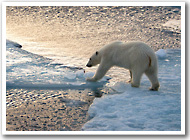
Melting sea ice forces polar bears to swim further in search of stable ice.
© Steve Morello/WWF-Canon | Arctic sea ice is now the thinnest ever in recorded history. Climate change has forced the ice into a downward spiral, which is having disastrous results not only for polar bears and Alaskan villages, but global weather patterns as well. Find out more and learn what WWF is doing to fight climate change.
|
September Caption Contest

Enter the WWF Photo Caption Contest, and your creative caption could be featured in next month's e-newsletter.
 "Joey, come see this!"Kylie J., Ankeny, Iowa "Joey, come see this!"Kylie J., Ankeny, Iowa
August's Contest Winner | | |
Help Protect Tigers from Illegal Trade


Illegal tiger trade is one of the greatest threats endangering tigers in the wild.
© Vladimir Filonov/WWF-Canon | Did you know that more than 5,000 tigers may live in captivity in the U.S.? Many of these belong to animal dealers, exhibitors and other private collectors, but the U.S. government has no way to determine who these individuals are or what happens to the tigers when they die. Because a tiger sold on the black market is worth ten times more dead than alive, current loopholes in U.S. regulations could make these animals a target for illegal trade in tigers and tiger products. Urge the U.S. Fish and Wildlife Service to finalize regulations to keep captive tigers safe from illegal trade. |
Free WWF Wallpaper for Your Mobile Phone

Now you can show your support for wildlife and nature by downloading WWF's new wallpaper for your phone! Visit the iPhone or Droid wallpaper page to get started. Once you sign up to receive text alerts from WWF, we'll text you a link to download the images. (Have an iPad? We've got something for you, too!) |
FEATURED VIDEOS

|
FEATURED EXPEDITION

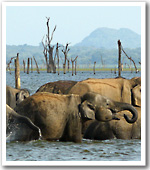
© Manori Gunawardena | A Journey to Sri Lanka
March 10 - 24, 2012

Join us on a new adventure to a seldom-explored spot that we consider one of South Asia's best-kept wildlife secrets. Look for wild elephants and leopards in national parks and go whale watching in search of blue and sperm whales, which congregate along the southern coast. Learn more.
| DO YOU KNOW?

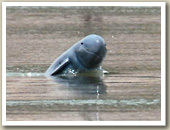
Irrawaddy dolphins are threatened by habitat loss and accidental capture in fishing nets.
© Fernando Trujillo | The Irrawaddy dolphin is on the brink of extinction. How many individuals exist?
a. 32
b. 85
c. 108
d. 129
Click on one of the answers
above to see if you know.
| | FEATURED SPECIES
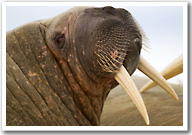 © Steve Morello/WWF-Canon © Steve Morello/WWF-Canon
Walrus
Odobenus rosmarus
Status: Least Concern
Basics: Walruses inhabit the Arctic regions of the Pacific and Atlantic oceans. Their great white tusks are used as ice-choppers, sediment rakes, weapons and status symbols.
Threats: Poaching, toxins, pollution, climate change
Interesting Fact: Weeks before Arctic sea ice levels reached a record annual low, observers estimated that over 20,000 walruses hauled out near Point Lay, Alaska. See the aerial photos.
|
Bank of America Is Supporting WWF

Show your love of the tiger with the WWF Visa Signature® credit card from Bank of America. Bank of America will contribute $100 to WWF for each new qualifying account. Get more details. |
|
Go to Bat for WWF

State Farm Insurance and Major League Baseball have teamed up to support WWF. Go to Bat™ for WWF's chance to win $18,000 in donations each week through September 25th--plus an additional $25,000 donation. Helping WWF also enters you in a drawing for MLB™ prizes, inlcuding World Series™ tickets. |
CONNECT WITH WWF
 Like the WWF page to see daily posts Like the WWF page to see daily posts
 Follow our exclusive WWF tweets Follow our exclusive WWF tweets
 Subscribe to watch WWF videos Subscribe to watch WWF videos
 Text PANDA to 69866 for WWF mobile alerts. Standard rates apply. Text PANDA to 69866 for WWF mobile alerts. Standard rates apply. | |
No comments:
Post a Comment